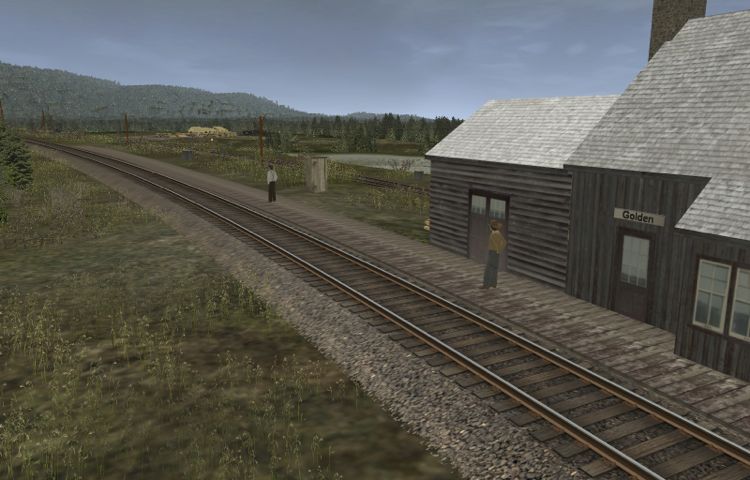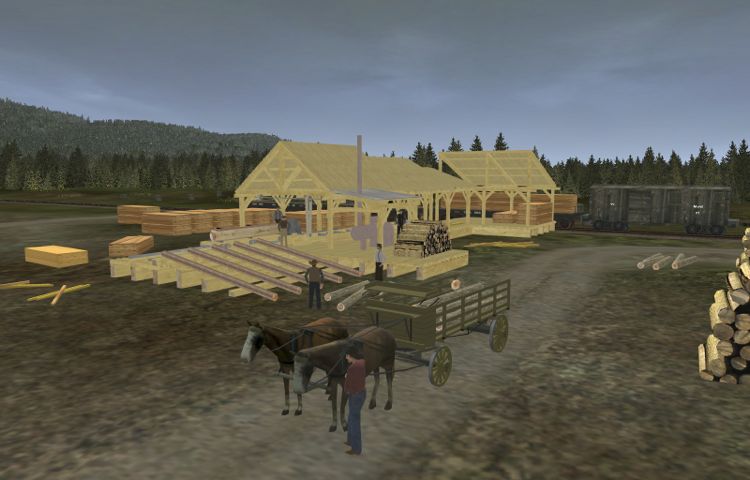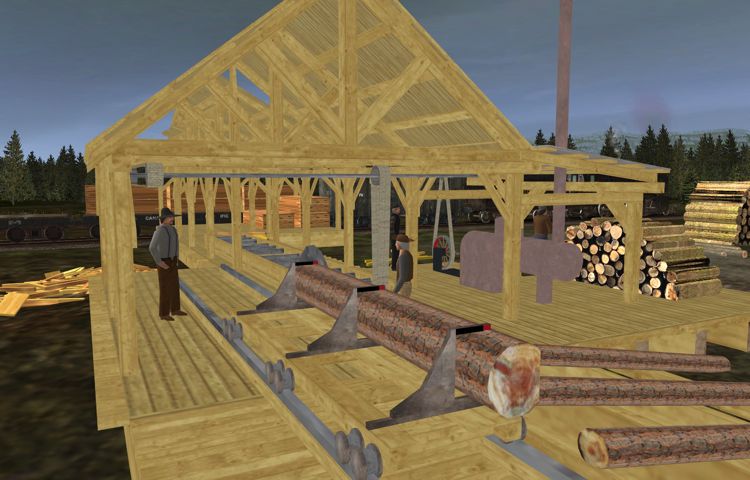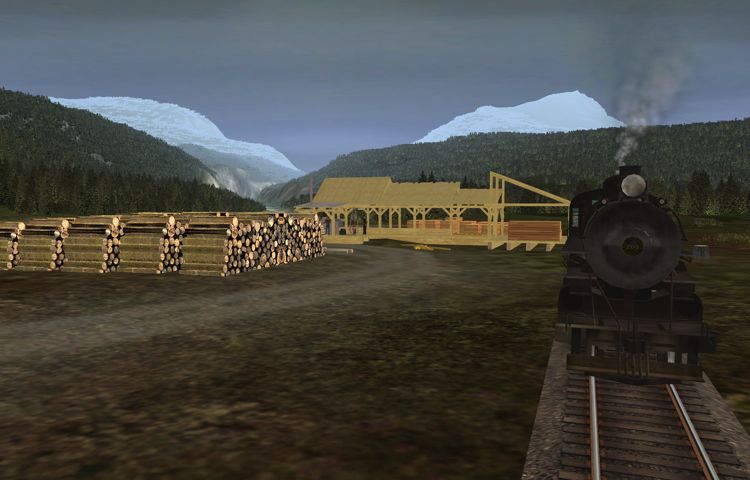The coming of the Canadian Pacific Railway opened up the Columbia River
valley and surrounding area to logging. At first the railway itself was a major
consumer of forest products. Not only ties, but also the building of trestles,
shoring up of tunnels, and construction of snow sheds consumed large amounts
of timber.
By the time the railway reached the Kicking Horse Pass in the Rocky Mountains
and Rogers Pass in the Selkirk Mountains it was running out of money. When
work commenced up the Beaver River valley towards Rogers Pass in March of
1885, the men had been paid only up to the end of the previous December. On
April 18th James Ross, Chief Engineer of construction from Swift Current west,
telegraffed William Van Horne, the company's General Manager in Montreal:
“I borrowed every dollar I could get, giving my personal cheque when nothing
else would answer … Yesterday (Tuesday) after paid of our track layers were
paid off, I sent them out and the Paymaster went to Mountain Creek, with an
escort, on the understanding I would meet them there in the morning; the devils
knew it was the track and Mountain Creek bridge I wanted going, if the grading
did stop. 150 men met the track laying gang and drove them back here, with the
police. I then took charge myself, and told Captain Steele [Royal Canadian
Mounted Police] I intended laying the track, and expected him to protect me by
reading the Riot Act, and if necessary firing into the crowd, who were led by a
desperate character, a former contractor, whom I had turned off. I told our men
I would be the first to commence work, and did not want them to risk their
lives. We succeeded this time, arrested the ringleaders and the Police shot one
man who interfered with the arrest.
Last night, Captain Steele informed me he expected a general riot with the
purpose of freeing the prisoners; I told him I would have an engine and caboose
with sufficient escort to send the prisoners East at 2 o'clock this morning. This
was carried out successfully. At daylight, I started out for Mountain Creek, the
Paymaster in the meantime having paid every man there for January and
February, and on arriving I met the crowd, with a magistrate and priest (the
latter all ready to give the boys the last sacrament if it was necessary) and
asked them if it was peace or war, telling them I was prepared for either.
After considerable parleying, and giving them an account of the fight at the
Beaver, they decided for peace, and Mountain Creek was started. I then went
West calling on each gang to work as soon as they were paid, they all agreeing
as far as I went; and if the money comes, everything will work as smoothly as
ever.
However, I pledged the men the paymaster would remain where he was until I
sent him the balance required. I may be accused of using harsh measures, but
you must take into consideration the country we are in, surrounded by
desperate fugitives from justice, and 1,500 men willing to work, with 1,000 who
will not let them. Unfortunately, Dewdney has sent a peremptory order to
Captain Steele to leave and he is going in the morning, but I think l can "hold
the fort" if you send me the money. It would never do here to show the white
feather; as when the men were paid, they might demand $2.50 per day, and we
would have no control over them during the remainder of this job...”
The reference to Mountain Creek is to construction of a timber trestle bridge,
the largest wooden structure in the world at the time. At 1,086 feet (354 m)
long and 164 feet (53 m) high it was to consume over 2 million board feet
(650,000 m) of lumber.
On the south bank of the Kicking Horse River across from the town site of
Golden a sawmill was established. It appears the south bank was originally
connected by a bridge and road to Golden. By the early 1890s pictures show a
railway line crossing this bridge with a spur to the left into the mill and a line
proceeding south presumable up the Columbia River valley and into the
Kootenay River valley to the south. The Kootenay River valley and British
Columbia to the south rapidly became a rich source of minerals and coal, which
it still is today.
The sawmill pictured here was constructed for this location, although not
according to any pictures of the mill.
On the contrary, the mill is modelled after Frederic Testard’s Coloregon Lumber
Company mill.
View all 11 pages fof this web site for plans and photos.
I used construction of the mill to refine my skills at “stick” building and to
become acquainted with animation. A tutorial on animating the steam engine
appears elsewhere in this web site.













